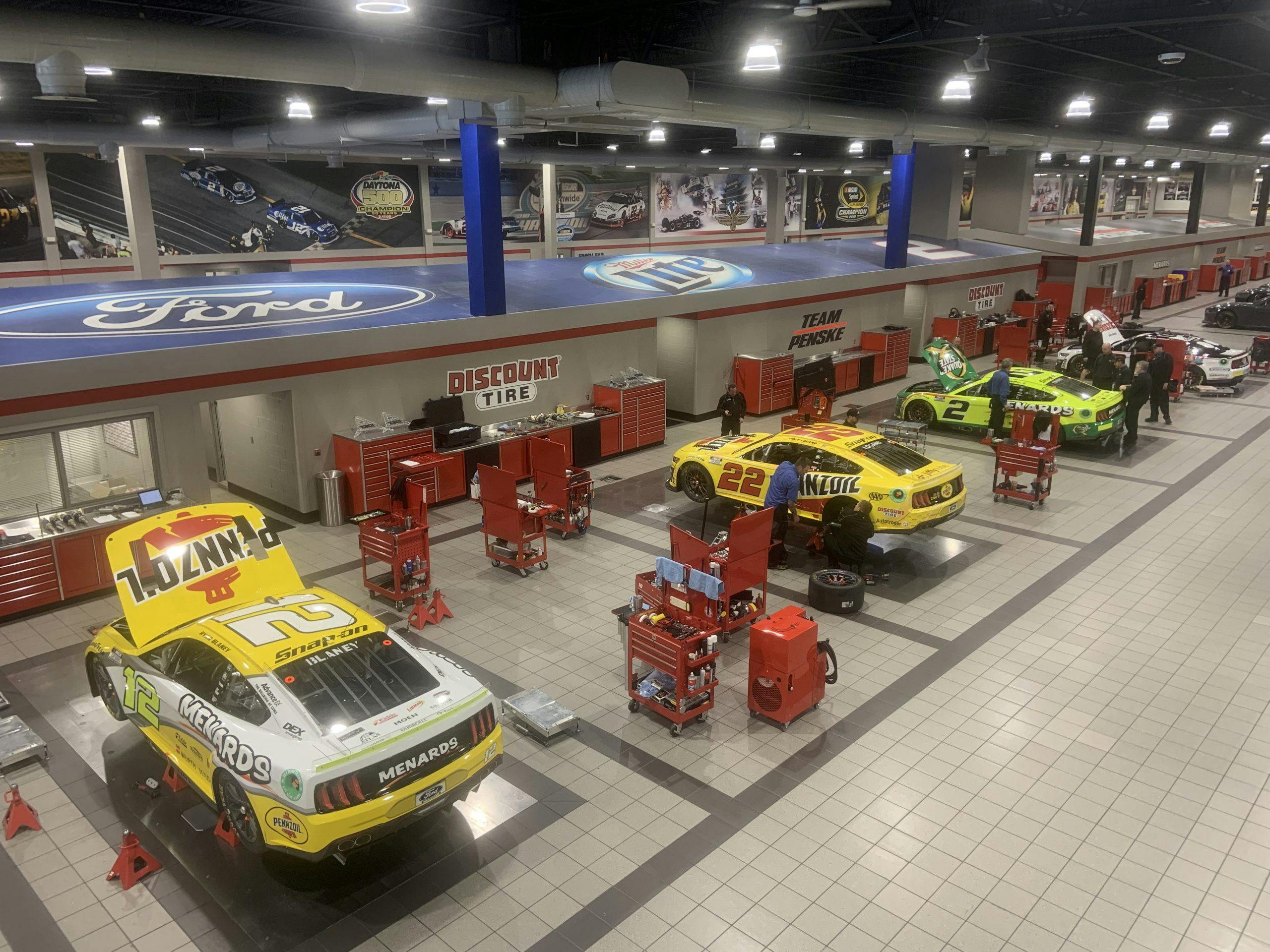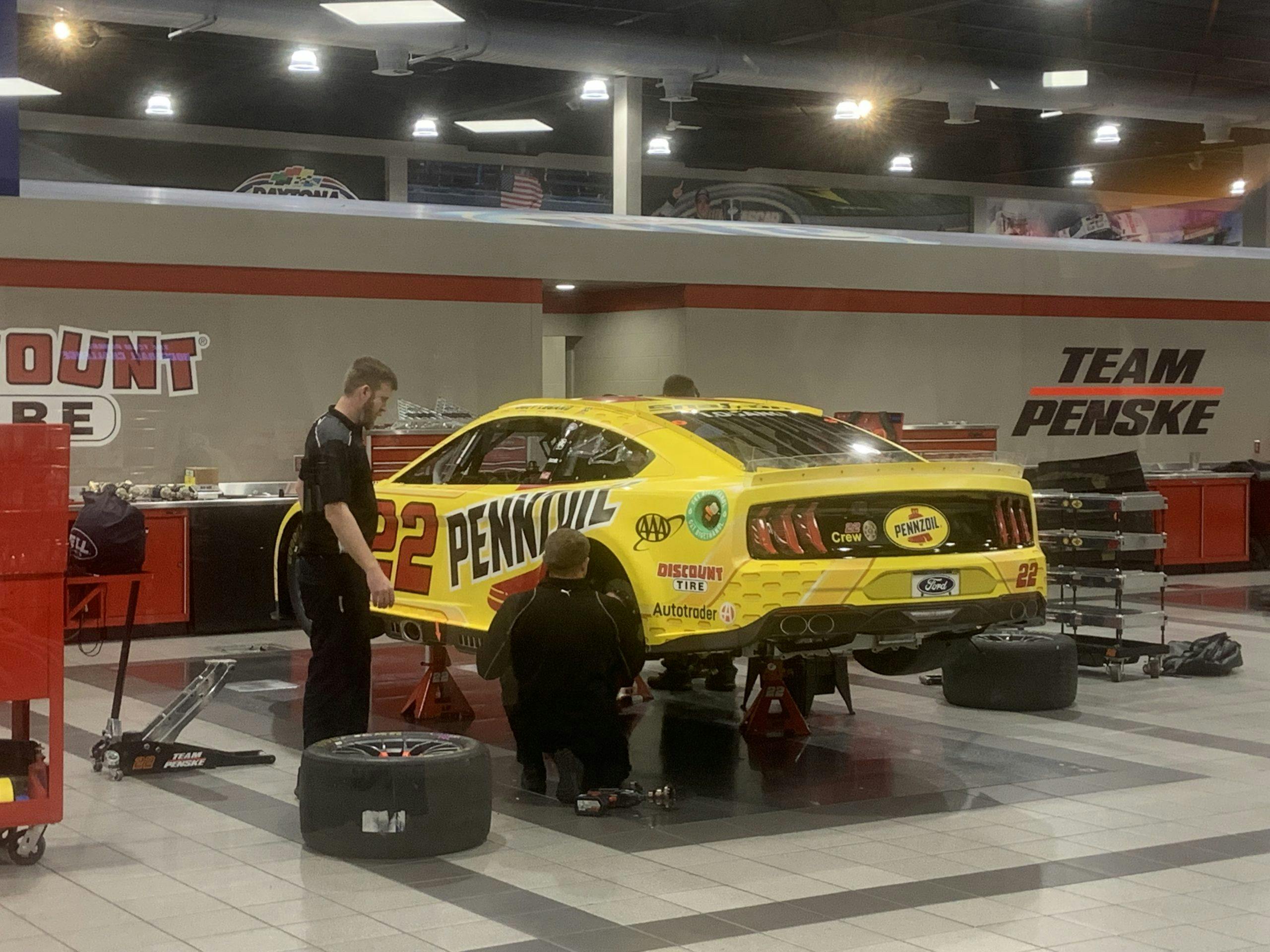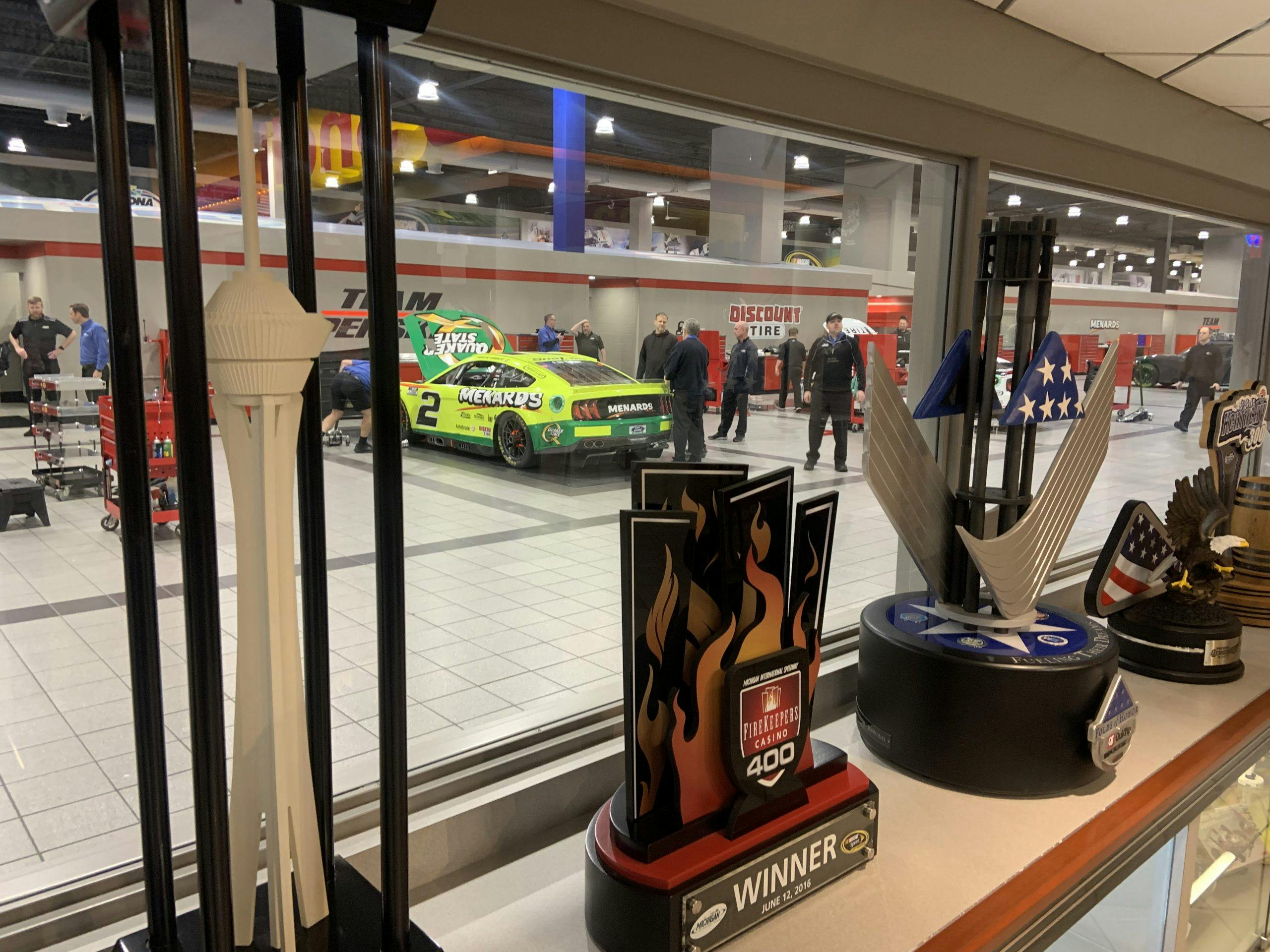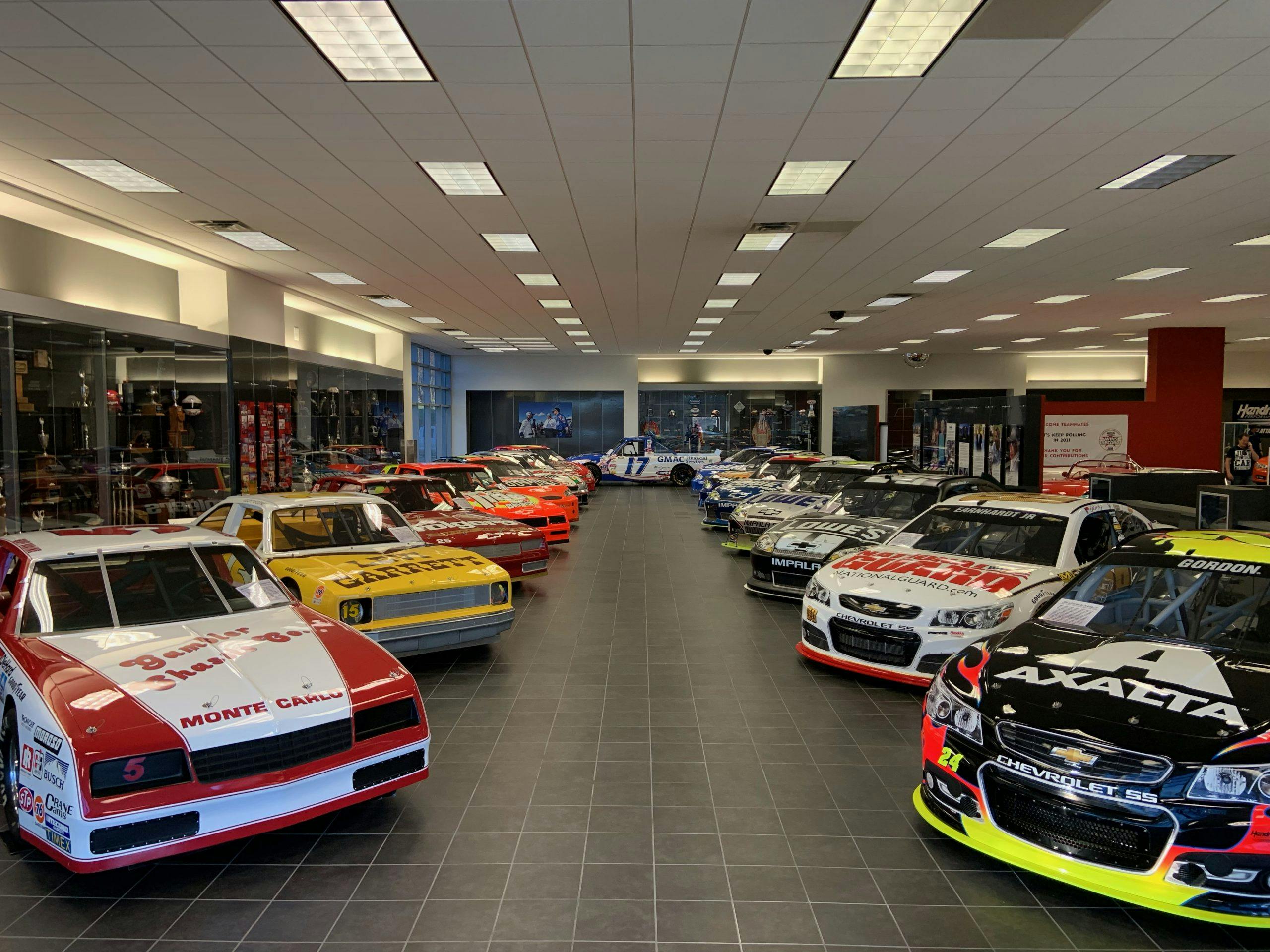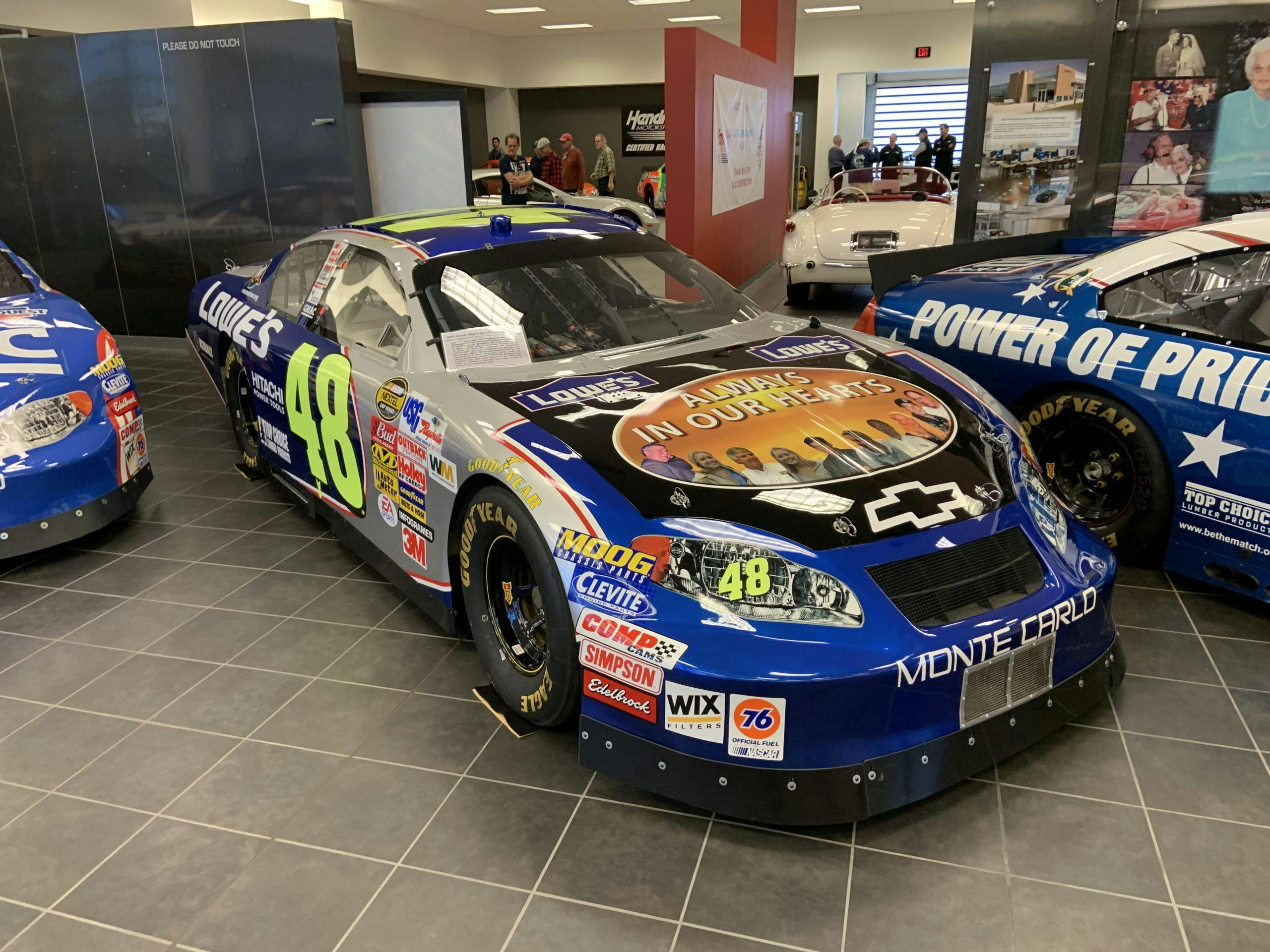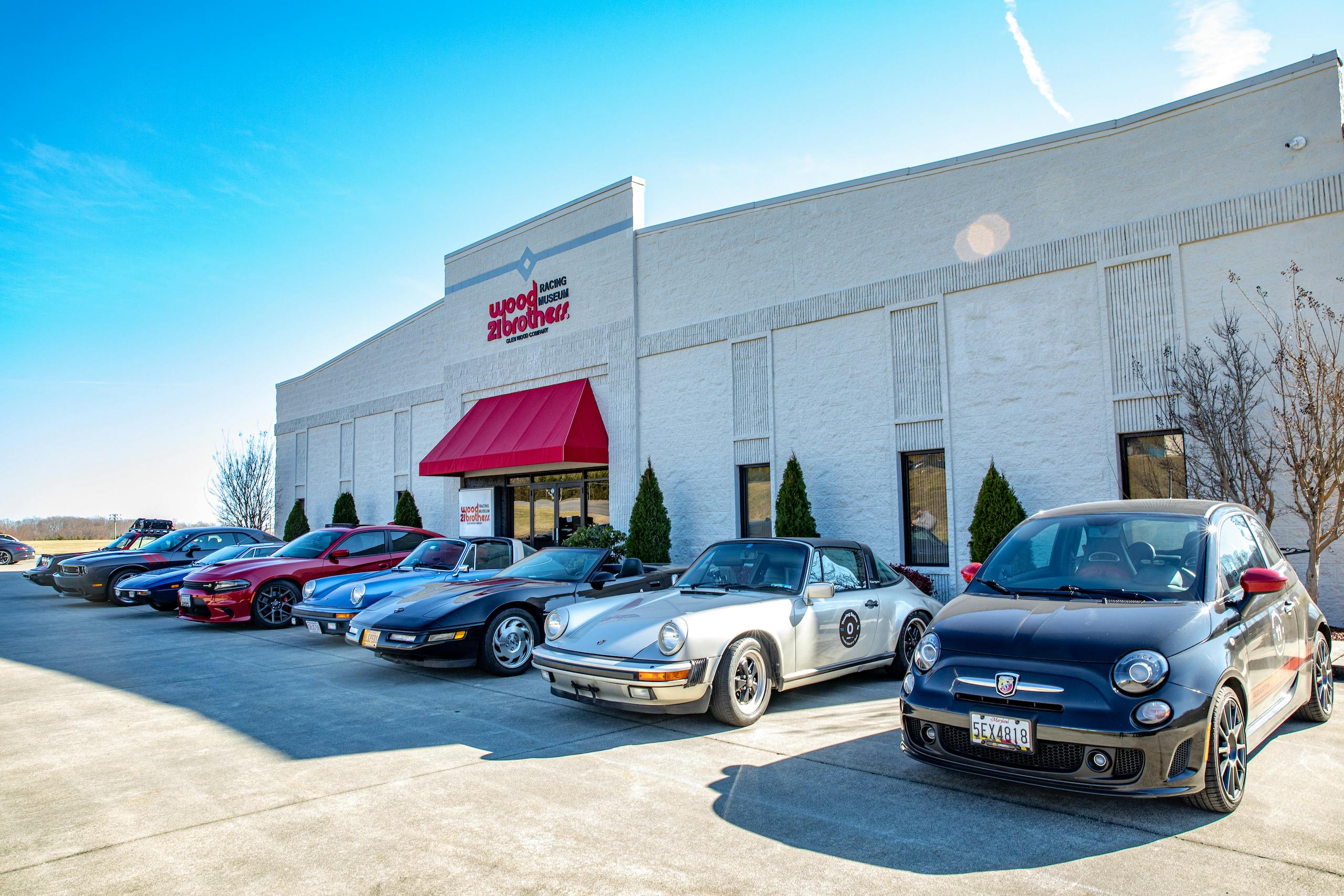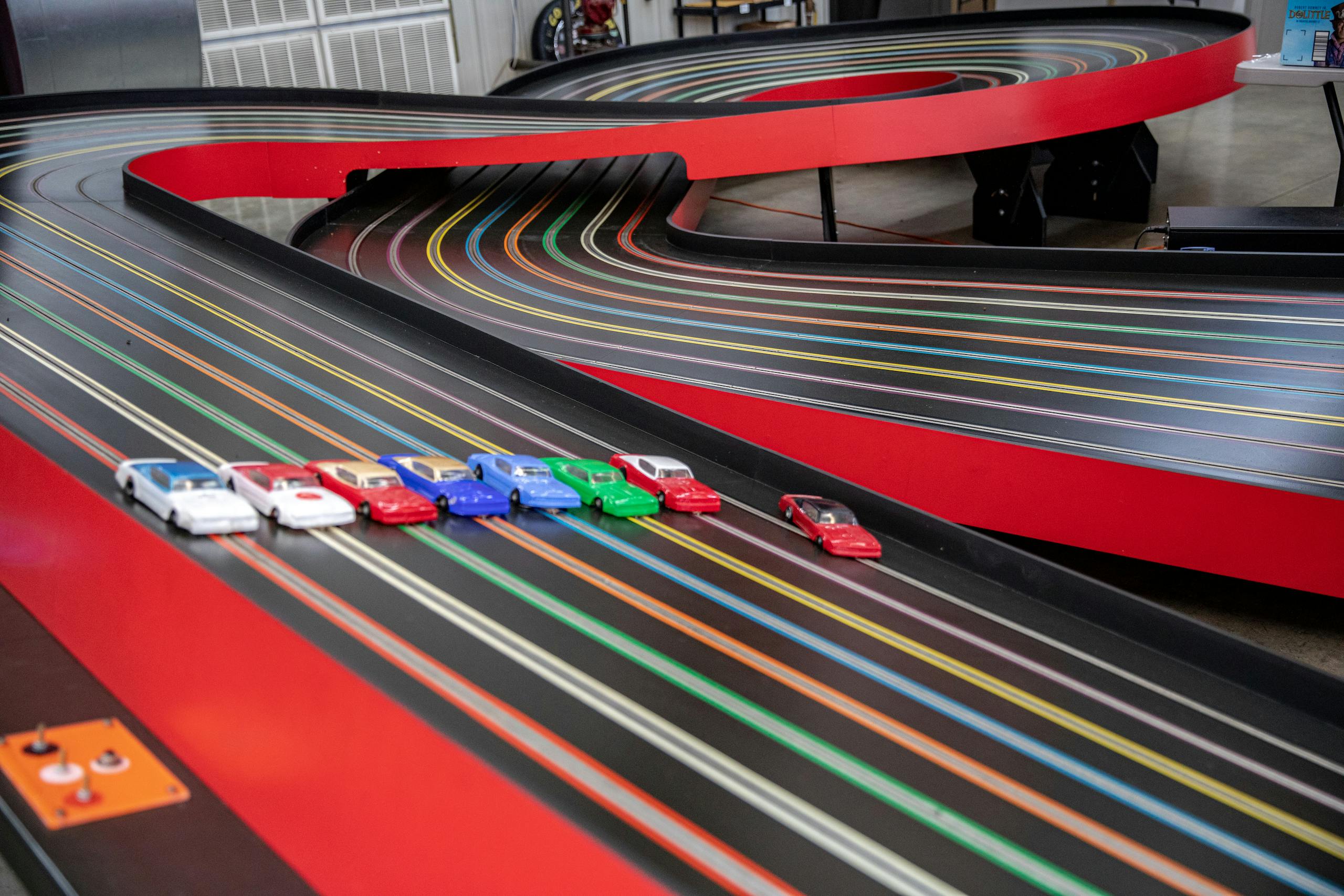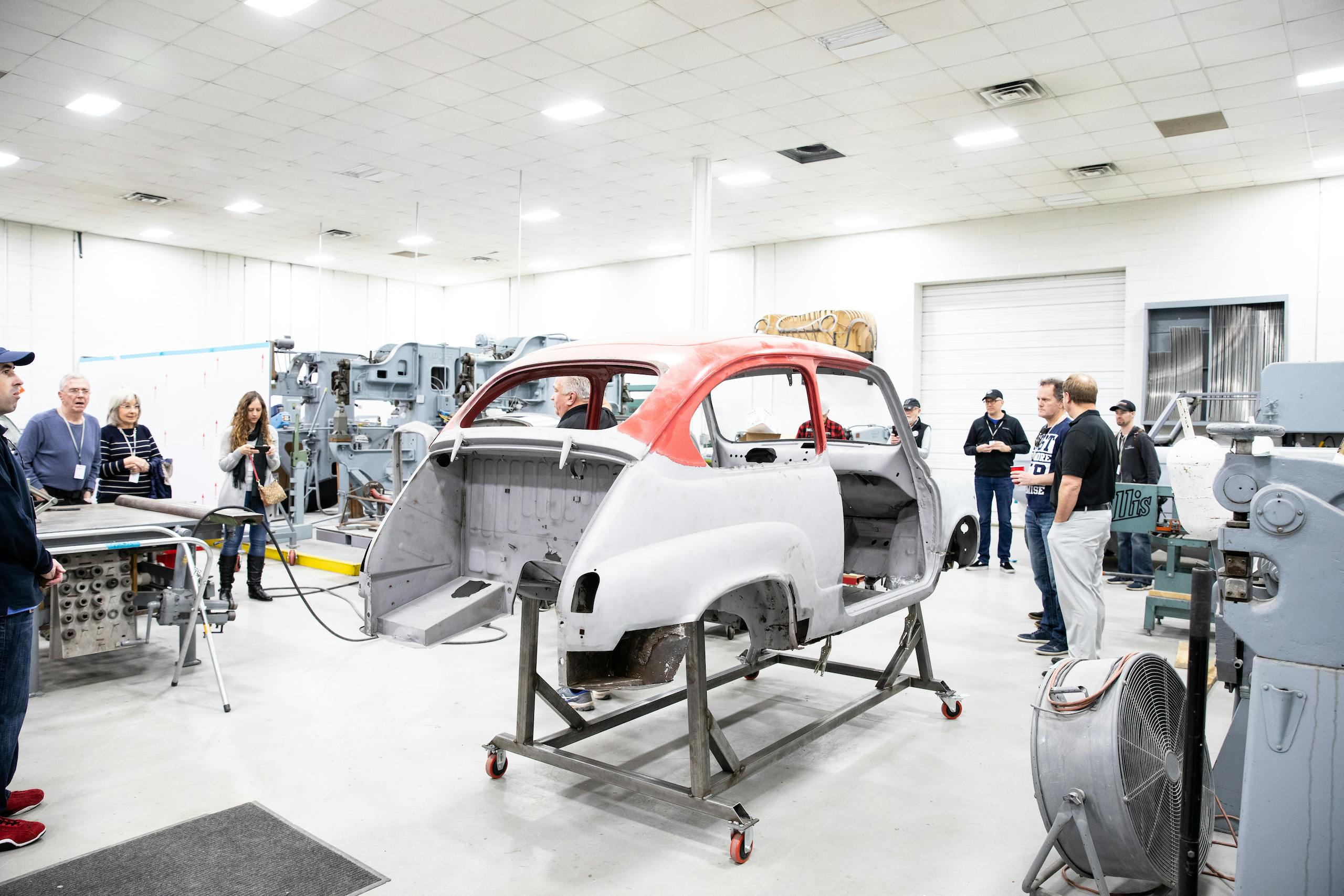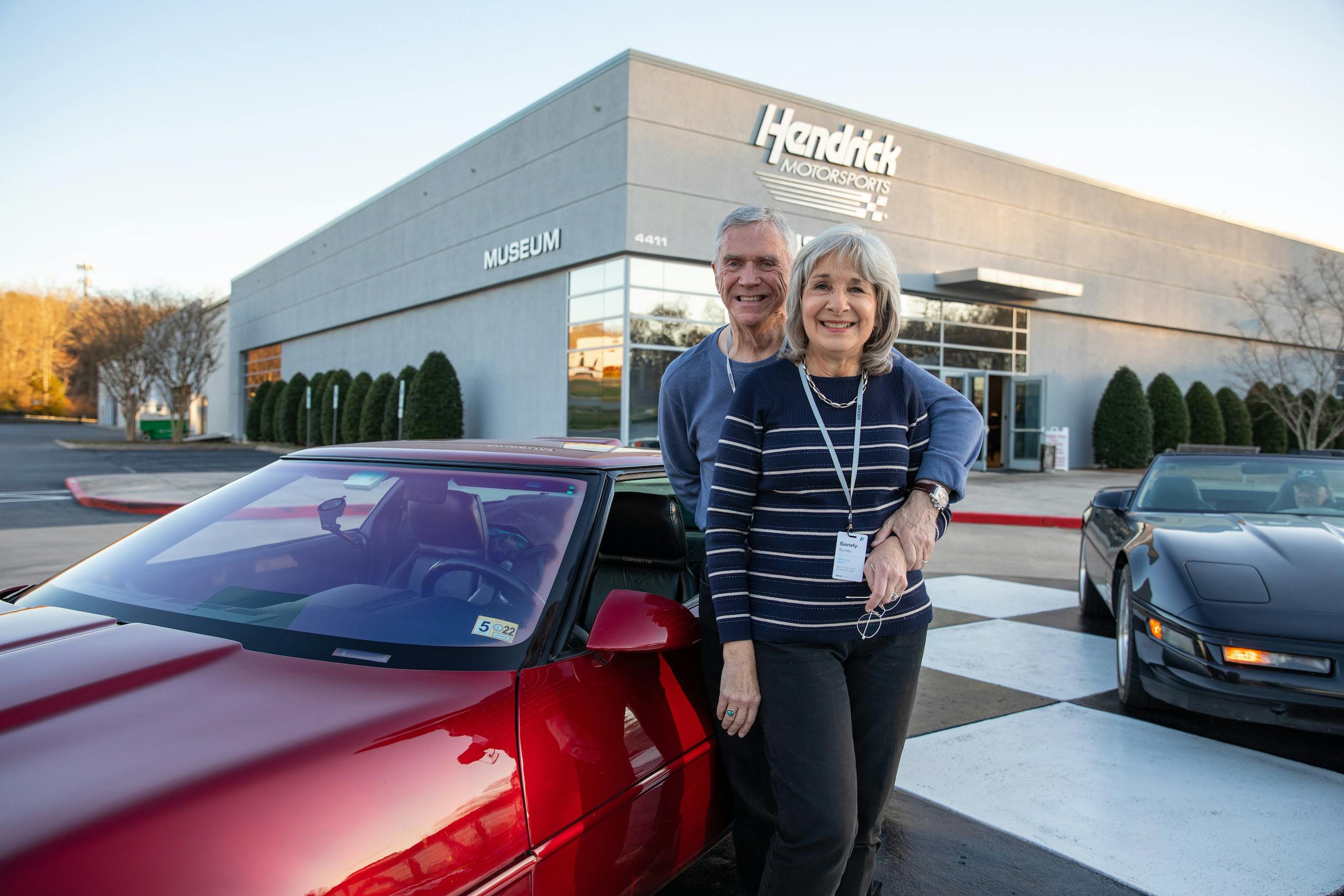Amelia or Bust: Cruising through NASCAR country inspires awe
In deference to some of the less nimble cars on the Amelia Island or Bust Tour, routemaster Dave Hord offered a reprieve from the twisty mountain roads on day three of the 1000-mile jaunt from Virginia to Florida. He labeled the day’s drive “Touring Day,” which described both the calmer North Carolina route and the amazing stops, which included tours of some legendary NASCAR team facilities.
Technically, the NASCAR tour started a day earlier at the Wood Brothers Racing Museum in Stuart, Virginia, 30 miles from Martinsville Speedway. If you’re new to oval-track racing, Wood Brothers may not be as familiar as Penske or Hendrick, but historically speaking they’re a pretty big deal. Family patriarch Glen Wood (sometimes spelled Glenn) started the team in 1950, making Wood Brothers the oldest continuously running team in NASCAR.
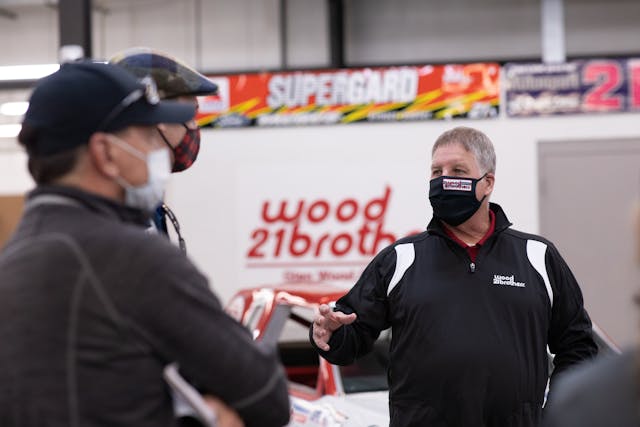
Glen raced through 1964, with younger brother Leonard serving as crew chief, engine builder, and co-founder. Glen, who died in 2019 at age 93, was later named one of the top 50 drivers in NASCAR history, while Leonard—in addition to his engineering skills—is considered the innovator of the modern pit stop.
Twenty of the top 50 drivers in NASCAR history took the wheel for Wood Brothers, a list that includes the likes of A.J. Foyt, Cale Yarborough, David Pearson, Ned Jarrett, Dale Jarrett, Buddy Baker, Neil Bonnett, Ricky Rudd, Mark Martin, Bill Elliott, and Ralph Earnhardt, father of Dale Earnhardt.

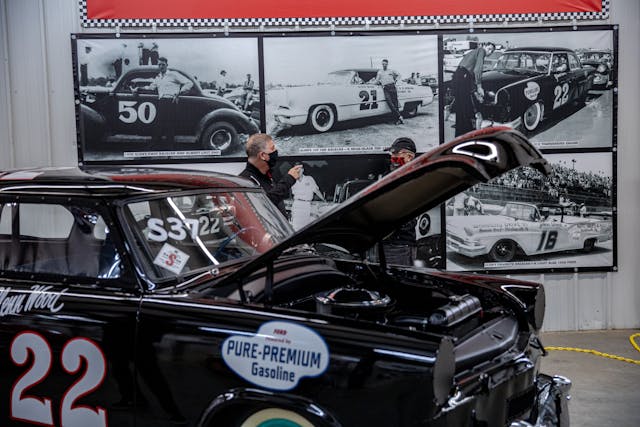
“We’ve been at this a while,” says Wood Brothers’ Bennie Belcher. “It’s definitely more complicated now because technology has taken it to a whole new level, but we’re still doing it. It definitely gets in your blood.”
And it’s clearly hard to slow down. In fact, 87-year-old Leonard still comes to work five days a week.
“He’s very much a mechanical genius,” Belcher says, pointing out miniature running engines that Leonard has built. “He still comes in every day, 8 to 5.”
The museum has dozens of cars on display, including a near-exact replica of the 1954 Ford that Glen raced from the pole at the 1958 Daytona 500, the last race held on the beach.
Glen’s son Len, who hosted the tour and affection calls his father “Daddy,” will be showing one of the team’s cars at the Amelia Island Concours on Sunday.
Day three of our tour began at Team Penske Racing in Mooresville, North Carolina. COVID protocols limited access, but Penske’s huge team shop was open, with dozens of racing trophies on display. The shop’s expansive windows offer a clear view of the work being done on several of the team’s Ford cars, including 2022 Daytona champion Austin Cindric’s No. 2 car and Ryan Blaney’s No. 12.
Rolling past Kyle Busch Motorsports, we stopped for lunch and a tour of Tim Lingerfelt’s Porsche restoration shop, Carolina Coach Crafters, which showed off some impressive metal-working skills. Then it was on to the wide-eyed, jaw-dropping highlight of the day, a behind-the-scenes tour of Hendrick Motorsports in Charlotte.
Founded by Rick Hendrick in 1984 as All-Star Racing, Hendrick Motorsports has won 339 races and 16 drivers championships across all three major NASCAR series. Notable Hendrick drivers include Jimmie Johnson, Jeff Gordon, Dale Earnhardt Jr., Kyle Busch, Ricky Rudd, Terry Labonte, and Kasey Kahne. Hendrick is the reigning Cup Series champion, with Kyle Larson taking the title in his No. 5 Chevrolet.
First stop on Hendrick’s sprawling campus is the pit crew area, where the team has just completed its daily practice. At first glance, it’s obvious that today’s pit crews look differently than they did in the early days, and Terry, our tour guide, quickly affirms what our eyes are seeing. “These guys are all former college athletes,” he says. “They have daily workouts, daily training. This is a full-time job.”

He also explains that the speed in which a pit crew can complete each stop is now less than 10 seconds. “Twelve used to be good, now—with the new single lug (on the tires)—it’s nine.”
On the way to the machine shop, we pass a fishing pond with a sign that says it’s open to employees only—catch and release. Terry tells us that it’s stocked with several species of fish, which is likely why they’ve caught trespassers trying to catch some for themselves.
Perhaps the most fascinating part of the tour is top secret, so we’re told absolutely no photos are allowed in the machine shop. “This is the war room,” Terry says. “Can’t let anyone take pictures in here.”
Once inside, we’re treated to a beehive of activity as technicians work on machines that are worth millions of dollars. Terry explains that although Hendrick also leases some of its engines to other teams, “only a Hendrick guy can touch a Hendrick engine.”
We walk past rows and rows of engines in various stages of assembly, along with complete mills that were used in one race and are being prepped for the next. One of the rooms holds a simulator that can be formatted to put an engine through the paces it will experience in a race. Not just any race, but whatever race they choose. Plug in Daytona, it runs the engine just as it would at Daytona.
Back outside, we walk past early Hendrick buildings while Terry points out the many new additions. “It’s just like a college campus. It just keeps growing.”
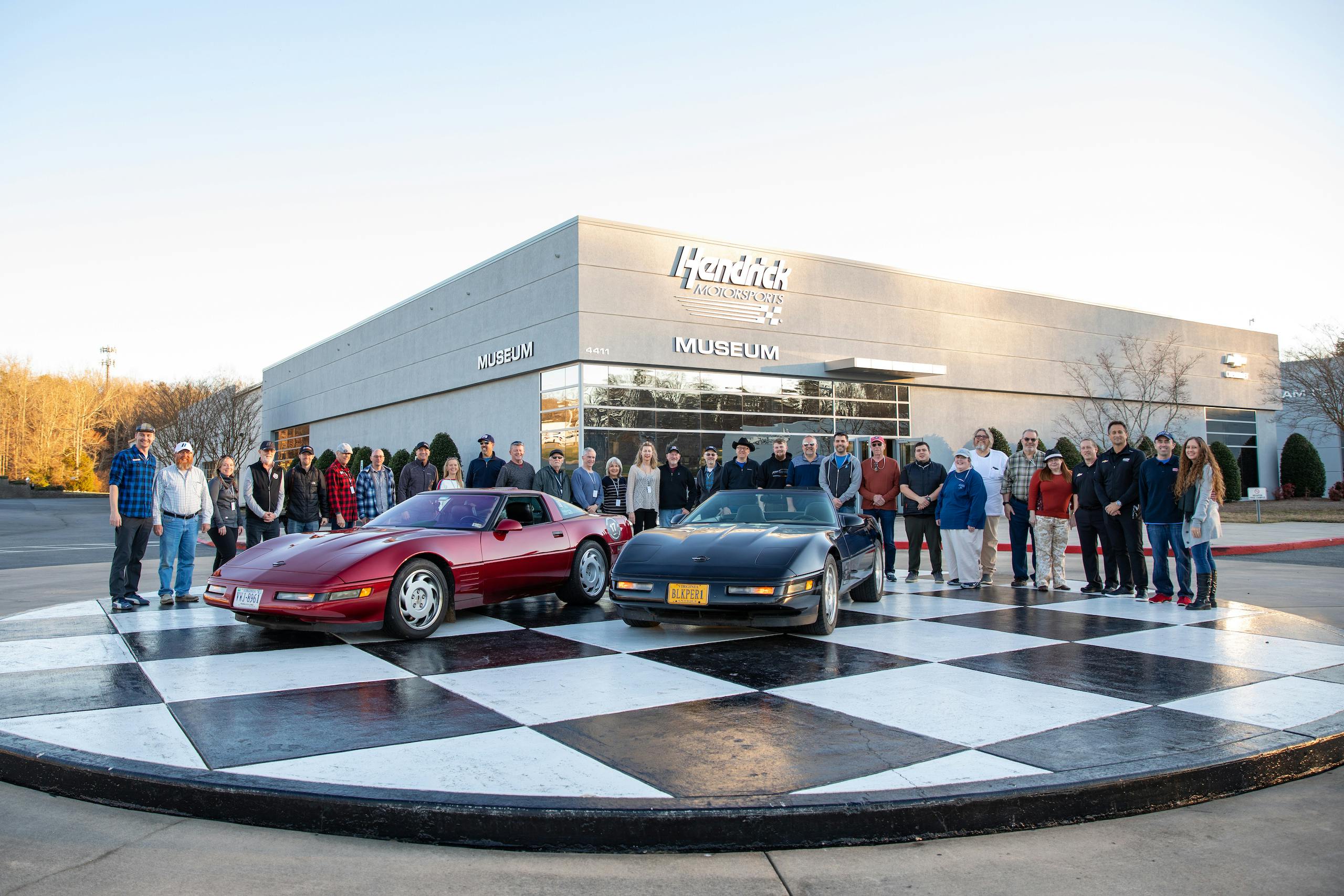
We’re welcomed inside one building to check out Rick Hendricks’ personal collection—again, no photos allowed. That’s too bad because there’s no way to describe his giant garage and the 200+ cars inside accurately enough to provide a proper picture. It’s so detailed, so immense that you’re bombarded by sensory overload.
Hendrick has designed the garage in a way that serves as a walk through the history of his life. Laid out like a city square, the store fronts along the walls all have something to do with his past. There’s a working Dairy Queen, drive-in theatre, and car dealership. Since Hendrick is a Chevrolet guy, Chevys are mostly what you see, but there’s also a fire truck, Snake and Mongoose drag cars, a Ferrari, a super-rare 1925 House Car, and a police car formally driven by an officer who hounded him as a teenager. The two are now friends. Among the jaw-droppers is a collection 1967 Corvettes in every conceivable color combination.
And the place is not all about cars. Hendrick is also a fan of movies and music. Among the many treasures in his collection are a stage costume that Elvis wore on near the end of his career and the robe that Sylvester Stallone wore in Rocky. Upstairs is a special room filled with autographed guitars from a wide range of pop and country stars—name one, he likely has it. He’s clearly a football fan too, which explains his collection of signed footballs from every winning Super Bowl quarterback.
The last stop is the Hendrick Museum, which displays significant race cars from the team’s history. One is the 2004 Chevy that Jimmie Johnson drove to victory at nearby Lowe’s Motor Speedway one week after the tragic loss of 10 Hendrick family members and personnel in a plane crash. Every victory since then has included a tribute to those who were lost.
It’s just one of the lasting memories from Touring day. Tomorrow brings one more exhilarating drive on twisty mountain roads before the route smooths out for our final push to Amelia Island.

